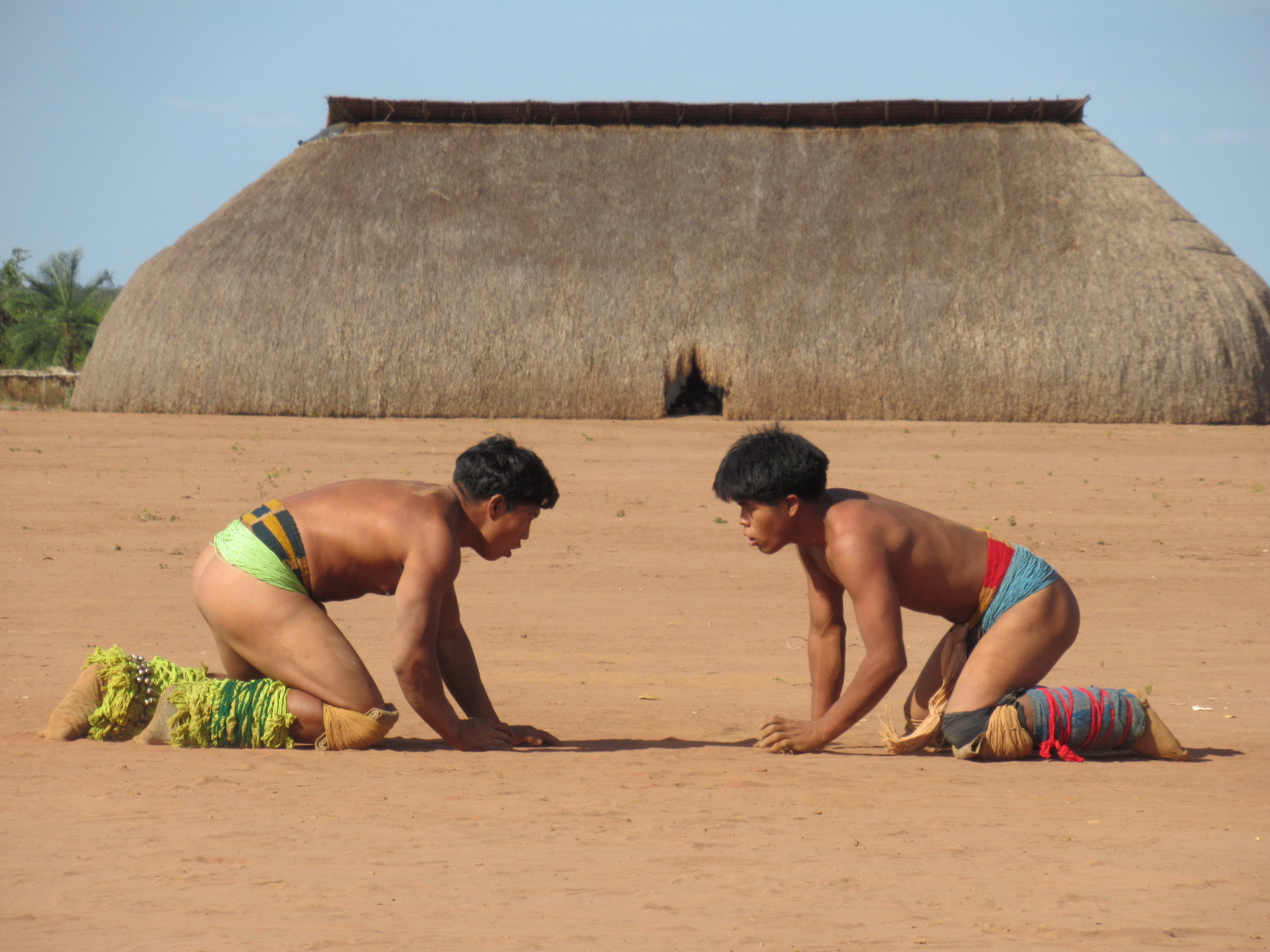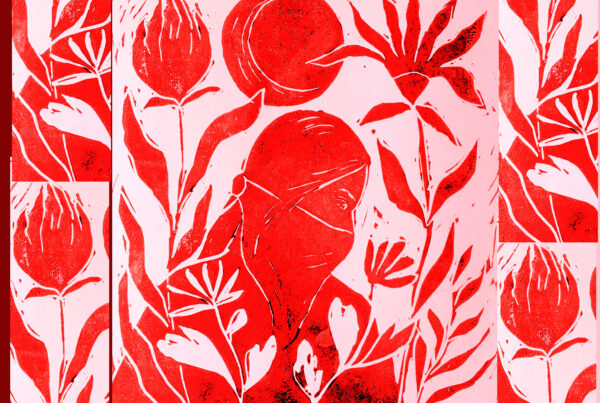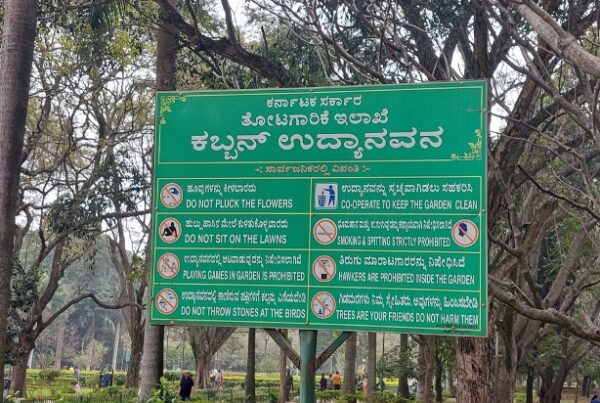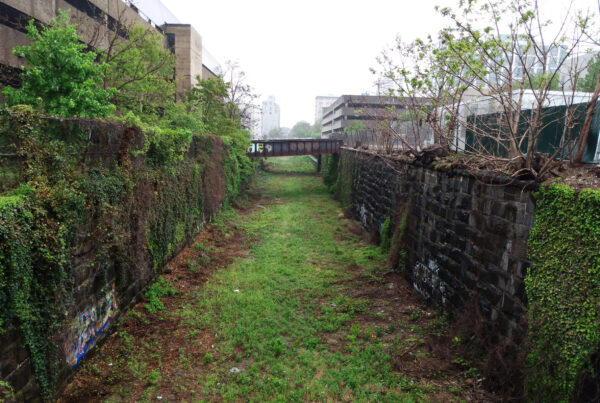by Francesco Torri
Brazil is the largest pesticides consumer in the world. Many of the chemicals permitted for agricultural use are produced by companies based in Europe and are associated with chronic health damage. The pollution they cause threatens the health of local Indigenous peoples and their survival.
“In the past, we didn’t have these diseases here, we didn’t get cancer… now there are several cases in our territory. Mostly cases of breast and uterine cancer among women, while among men prostate cancer. Before, we didn’t suffer from diarrhea or asthma, the children didn’t have attention disorders… but now there are many cases. We are worried’ says M., an Indigenous nurse in the Yalawapiti village, in the Upper Xingu, Brazil.
Today, this Indigenous territory known as Territorio Indigena Xingu (TIX) is seriously threatened by the agri-food industry. Its cultural richness and unique ecosystem are perishing due to the misconduct of agribusinesses.
The long dirt roads that lead to TIX, make their way through an ocean of soy fields before reaching the dense forest of the Indigenous territory. It is distressing to look at stretches of soy fields and silos for more than a seven-hour drive. Hundreds of trucks come and go from the warehouses where the crop is stored, raising huge clouds of dust. On battered signs, one can read the names of large multinationals like Cargill, Bunge, or Amaggi. Almost all the biggest soy fazendas (farms) sell their harvest to these agribusiness giants who then distribute it around the world.
Brazil devotes 43% of its arable land to soy and accounts for 50,3% of the global soy exports, making it the world’s largest producer and exporter (13.2 million tons exported in March 2023). In the Mato Grosso region, where TIX is located, some 18 million tons of soy are produced annually over 6.4 million hectares of cultivated land. The TIX region alone accounts for 10% of Brazil’s total soy exports.
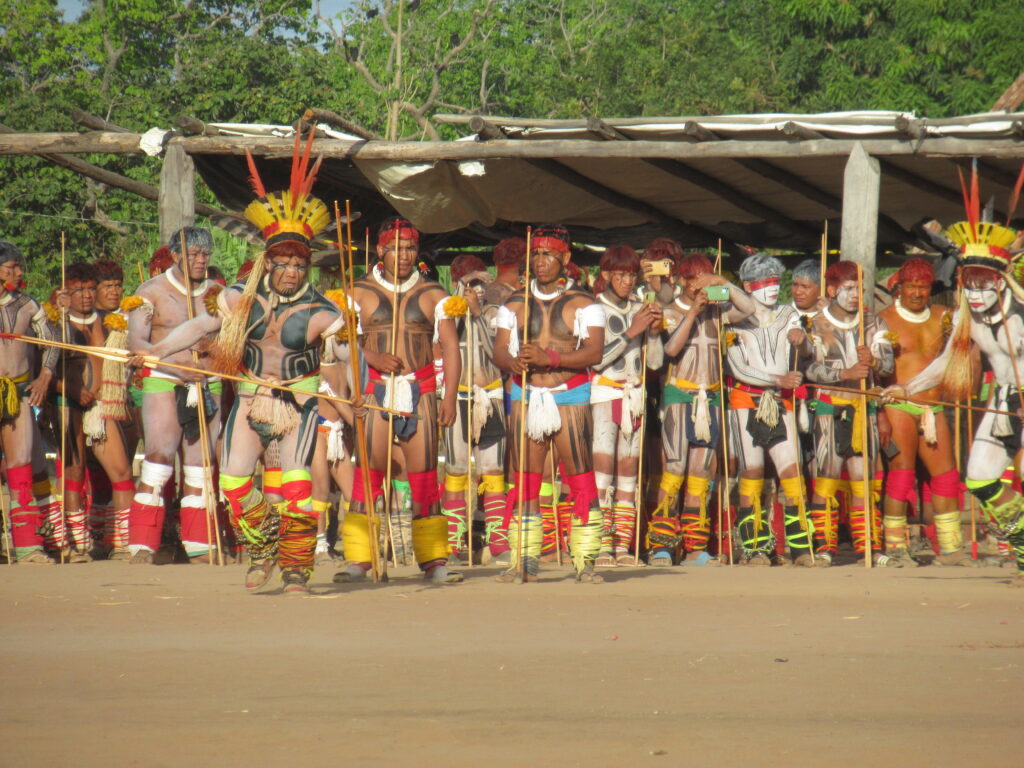
Javari ritual in the Kalapapo village (Credit: Francesco Torri)
Pesticide abuse is tolerated by the state
“You should see during the rainy season, the planes passing by to spread pesticides,” Tumin, a Yawalapiti village leader, tells me. “It looks like pulverized rain and it has a strong smell. During the last four years they have been doing it with increasing frequency and closer and closer to our territory.”
In Brazil, the use of pesticides is regulated by law 7802/1989, which imposes rather restrictive controls and limitations on the use of any potentially carcinogenic substance.
Nevertheless, Brazil is the largest pesticides consumer worldwide. About 20% of the world’s pesticide production is purchased by Brazil. This is due to the absence of effective control mechanisms by public bodies, as well as an extremely high demand.
A study by CSP (Centro Saude Publica) shows that 450 chemicals are permitted for agricultural use in Brazil, including those found in pesticides and fertilizers. Considering pesticides alone, the same study reveals that 67% are associated with chronic health damage. Moreover, 45% of the chemicals used in Brazil are prohibited in the European Union. For example, while 10mg of glyphosate per kg of soy is allowed in Brazil, in the EU the legal amount is reduced to 0.2mg/kg. Another example is atrazine, a herbicide that is highly harmful to both humans and the environment, often linked to cases of hormone imbalance, which has been banned in the EU since 2004. In Brazil, however, it is the fourth most used pesticide, with 287,000 tonnes purchased in 2018 alone.
Considering that the Indigenous peoples of the upper Xingu have a diet based mostly on fish and flour, it is no coincidence that the types of cancer found by the Yawalapiti nurse in the Indigenous territory are precisely the same that various medical research links to pesticide exposure.
A very recent study by the Federal University of Mato Grosso confirms that in regions where pesticides use is most frequent, the mortality and morbidity rate from cancer is higher among children and adolescents aged 0-19 years. Half of these cases turned out to be leukemia.
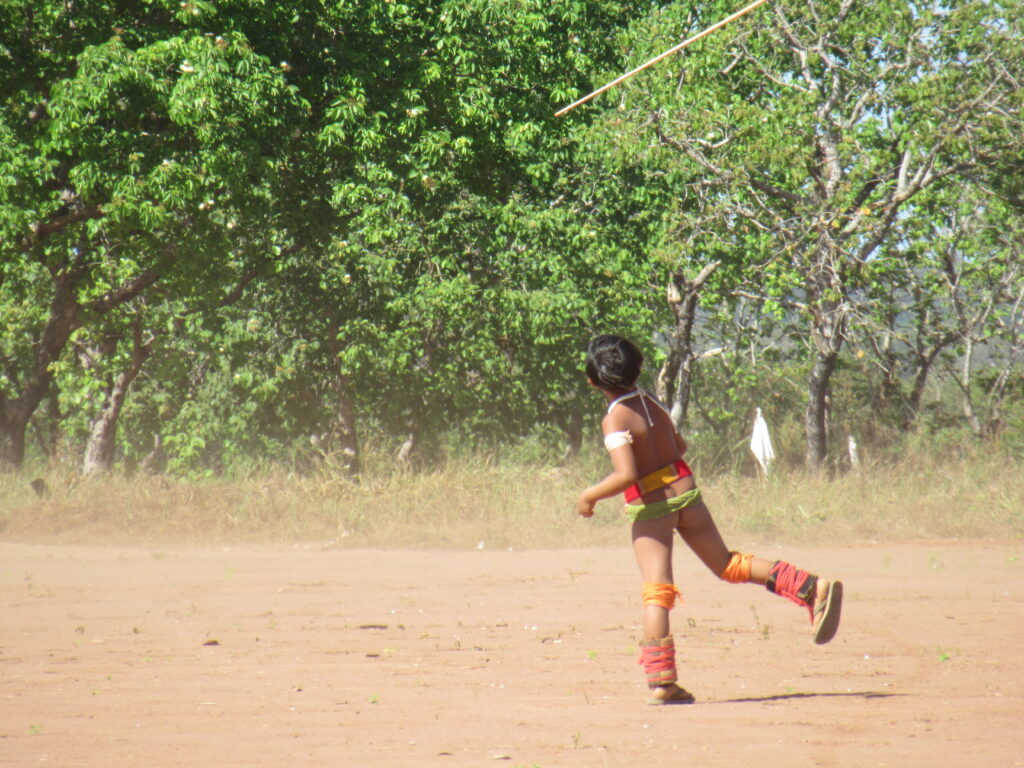
Yawalapiti kid training with arrows (Credit: Francesco Torri)
A problem that seems to transcend political parties
Tumin’s account illustrates another important dimension to the use of pesticides in Brazil, namely politics. As the Indigenous leader implies, in the last four years of Bolsonaro’s government, the use of pesticides has indeed increased dramatically. In the first 100 days of his government, 152 new pesticides were approved for use. A graph from the Ministry of Agriculture published by Mongabay shows that from 2010 to 2018 the number of pesticides registered annually in the country increased almost fivefold, from 104 to 450. To date, there are more than 1,500.
Despite this, the agribusiness lobby has been aiming to deregulate the use of pesticides for almost 20 years through the approval of the so-called ‘poison package’, a reform of the regulatory framework that would facilitate the access to highly toxic pesticides on the Brazilian market, exposing thousands of people, Indigenous and non-Indigenous, to risks of poisoning. This law, approved on February 9, 2022, by the lower house is now awaiting a vote in the Senate. Lula’s return to power, however, has rekindled hope among opponents of this legislative proposal. Indeed, the new president’s promises to develop policies to protect Indigenous groups would lose credibility if the problem of pesticide abuse is not tackled head on.
To date, however, the decisions being taken by the Ministry of Agriculture (MAPA) are not at all reassuring. Recently, the controversial Law 16 of April 6, 2023, was approved, allowing the introduction into the Brazilian market of 44 new dangerous pesticides, including the insecticide Acephate, known to exterminate huge quantities of bees, and the herbicide S-Metholachlor, highly carcinogenic.
Many suspect that pressure from the EU is behind this decision.
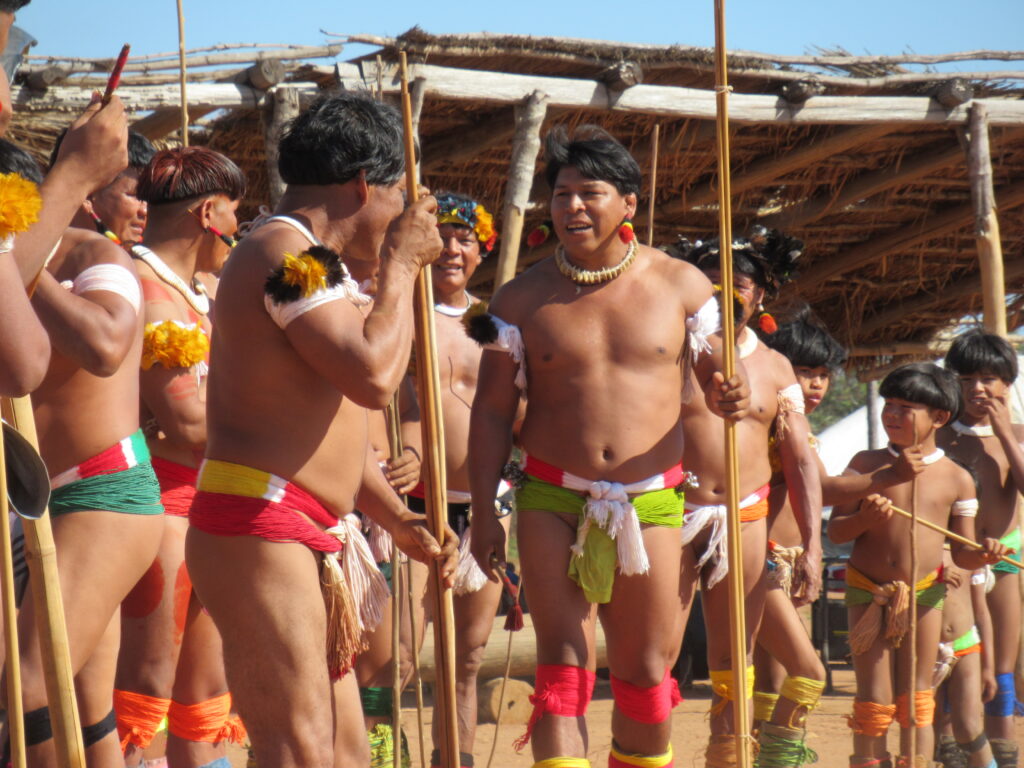
Yawalapiti men training for the javari ritual (Credit: Francesco Torri)
The double complicity of the EU
“The first time I saw pesticides being spread by an airplane I didn’t know what they were. So one day I asked a fazendero, he told me it was poison. Then I asked him why they were poisoning the products they consumed. He told me they didn’t consume them, they sent everything to China and Europe” says Tumin.
About 70% of the soya produced in Brazil is exported. China, at the top of the list of Brazilian soy-importing countries, imports 40% of Brazil’s total exports. Europe, in second place, imported $14 billion worth of it in 2021 with 6.7 million tons entering the port of Rotterdam alone. The Netherlands is the largest importer of soya in Europe, followed by Spain, Germany, and Italy. From these ports, it is then distributed to other EU member states.
Studies show that 85% of this soy is used to supply intensive cattle, pig, and fish farms. This means that the production of meat and fish for human consumption in the EU is fed by-products grown with huge amounts of highly toxic pesticides.
Moreover, most of the pesticides that are imported into Brazil are produced by companies based in Europe. We are not surprised to walk the streets of Querencia, on the border of TIX, and encounter offices of Bayer (German pharmaceutical giant) and Basf (German chemical company). Together with the Swiss Syngenta, these companies control 54% of the world’s pesticide market.
A recent report published by Greenpeace shows that there are 71 substances considered extremely dangerous in the EU, and therefore banned therein, that Bayer sells in Brazil. The FAO estimated that a total of 380,000 tonnes of these banned substances were used on Brazilian crops.

A glimmer of hope from the European Union?
On February 23, 2022, the European Commission presented a legislative proposal to ensure the social and environmental responsibility of companies throughout their supply chain. This directive, known as the CSDD (Corporate Sustainability Due Diligence Directive) would be the first to impose sustainability due diligence standards on European companies and prevent human and environmental rights violations along the supply chain.
Approved on June 2, 2022, by the Parliament with 366 votes in favor and 225 against, the law is now awaiting negotiations between the Parliament and the Council of Ministers. If it passes, the law will have two years to be integrated into national legal systems by the member states.
The directive is intended to apply to all companies operating in the EU with more than 250 employees and an annual turnover of at least 40 million. In addition, companies operating outside the EU with more than 250 employees and an annual turnover of at least 150 million would also be included. These companies would then be compelled to not only identify potential violations along the supply chain, but also to prevent, mitigate and remedy them. Everything will have to be done according to transparency standards that require annual reports demonstrating the absence of violations along the value chain, from direct and indirect suppliers to the use of goods.
This groundbreaking bill could certainly have far-reaching consequences on the Brazilian soy market. No company failing to comply with the parameters set by the Commission would be allowed to buy soy produced in Brazil any longer, given the drastic consequences on human health and the nature of the production methods adopted.
However, for Tumin’s dream that his kids will be able to eat fish without the risk of getting sick, urgent action is required by the local government and international organizations. No human being should be exposed to highly toxic pesticides. No ecosystem should perish under the abuses of transnational companies.
Francesco Torri is an investigative journalist trained in environmental law, currently reporting on socio-environmental conflicts linked to the misconducts of multinational companies. You can follow him on Instagram @resistance_voices.
Image on top: Yawalapiti youth training the huka huka ancestral fight (Credit: Francesco Torri)


